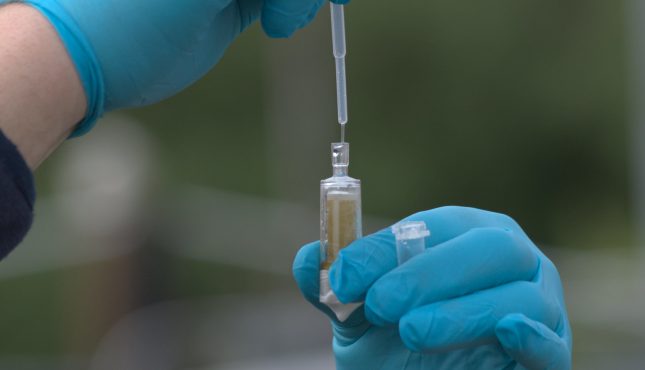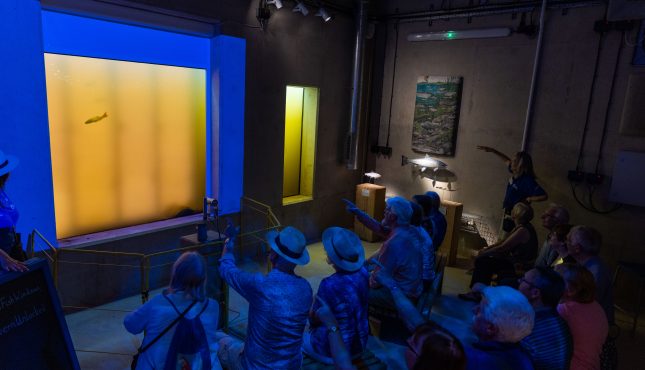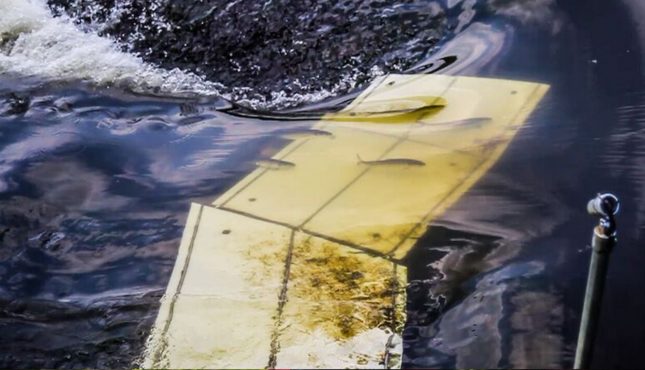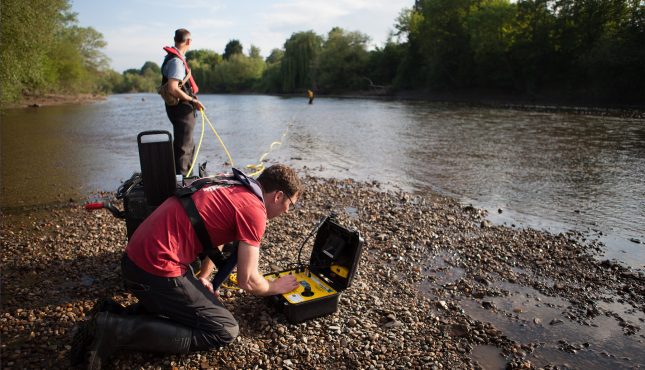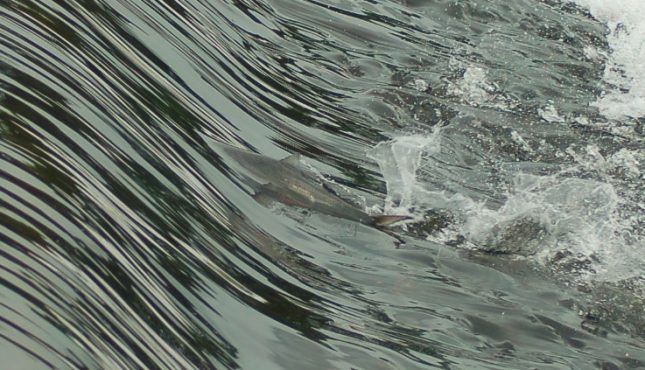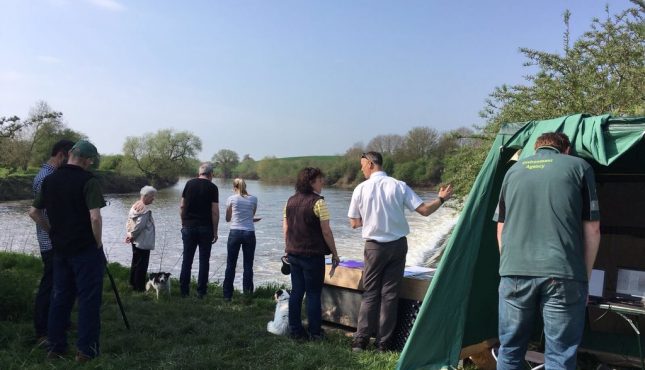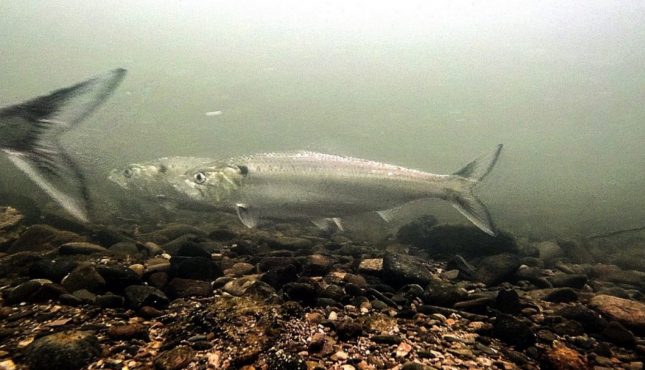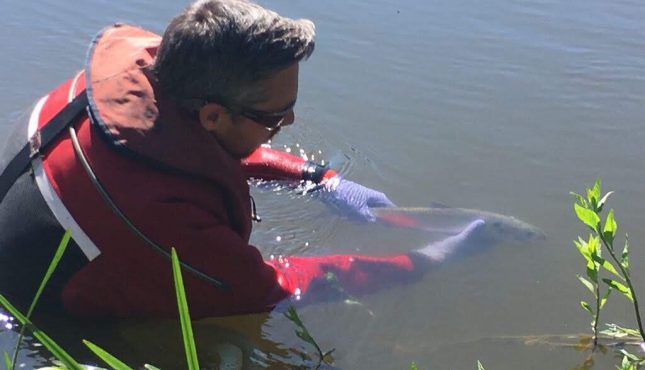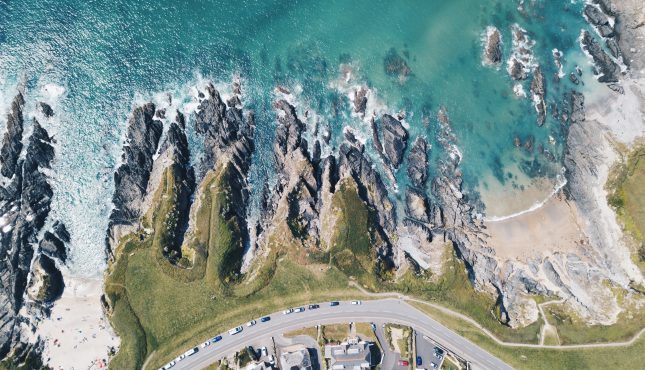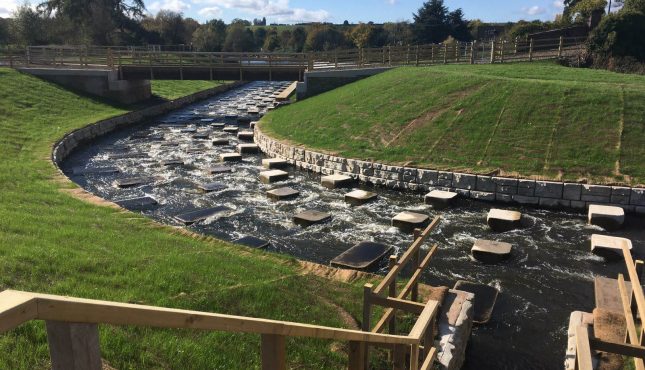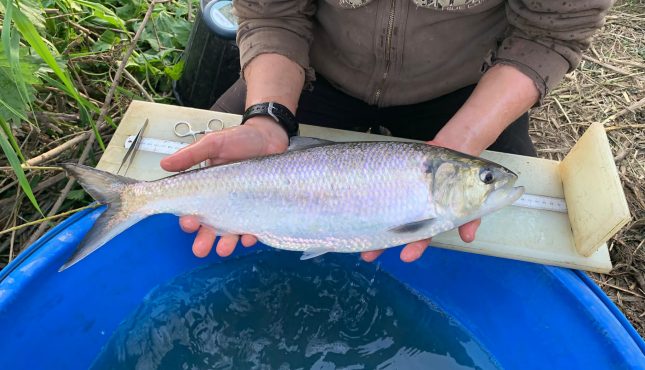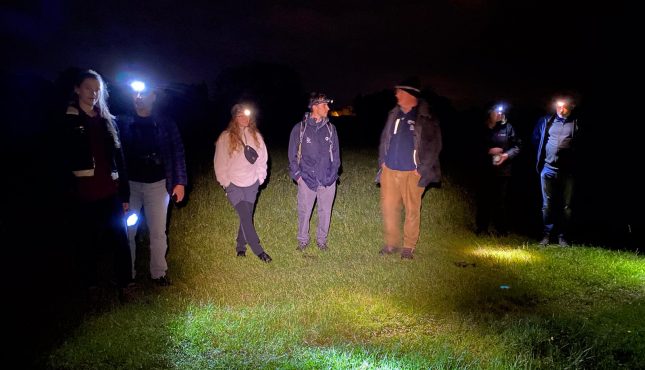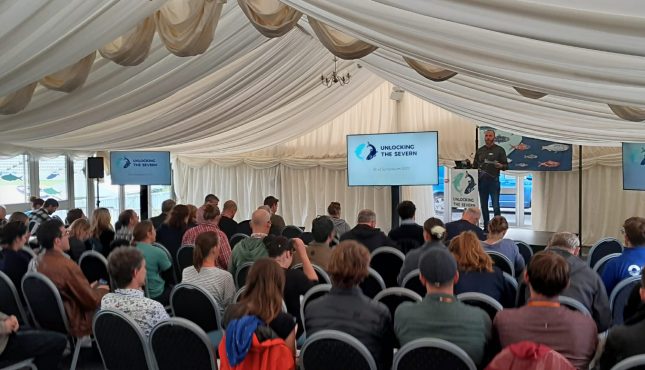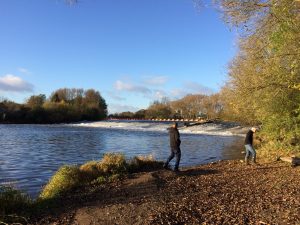How have we monitored the shad?
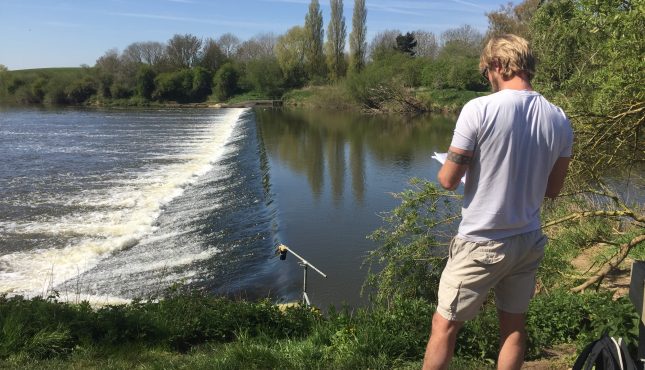
Counting shad at Upper Lode Weir
At Upper Lode Weir in Tewkesbury, Gloucestershire, shad are able to pass over the weir using a notch next to the riverbank. We recruit volunteers to help us count the shad seen passing through the notch. The number of shad counted in the spring is used to estimate the migrating population.
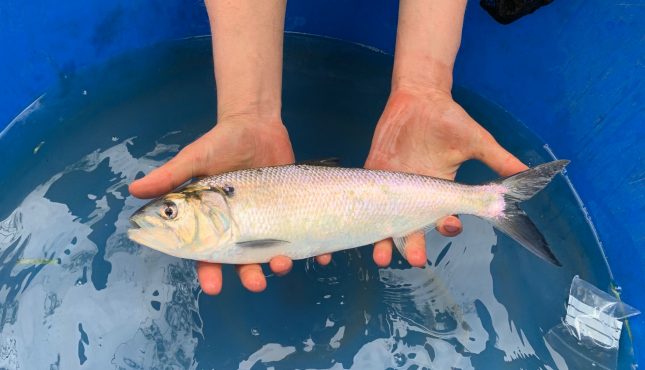
Acoustic tagging
Tagging is a useful method to track the behaviour of individual shad during their migration. Tiny tags are carefully inserted into the fish, and the shad are released to continue their migration. When shad pass different receivers along the river, we receive a ‘ping’ from the tag and the time that shad passed by is recorded. We can use this to see how far a shad has migrated upstream, and track its unique journey in the river.
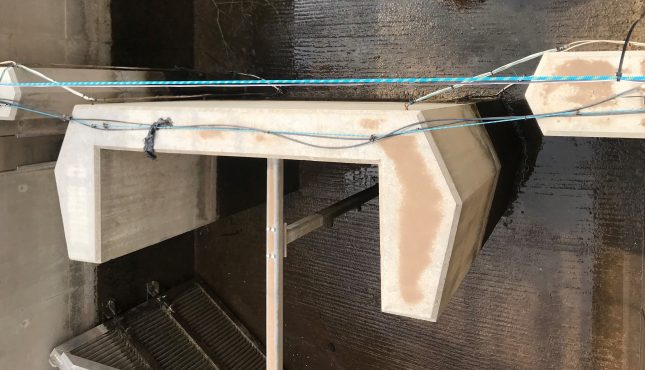
PIT tagging
The other tag we use to track migrating shad are Passive Integrated Transponders (PIT tags). These are tracking tags which provide a location when fish swim through a special antenna, or PIT tag loop. We have several PIT tag loops in Diglis Fish pass, and the data from these provides information about the efficiency of the fish pass, as well as shad movement through the pass.
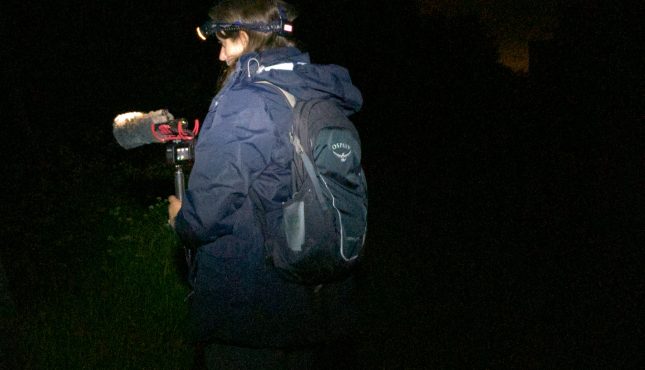
Spawning monitoring
Shad make a very distinctive splashing sound when spawning. It is important for our project to gather information as to where shad spawning is taking place. We use night-time spawning walks and AudioMoth devices to listen out for spawning activity.


